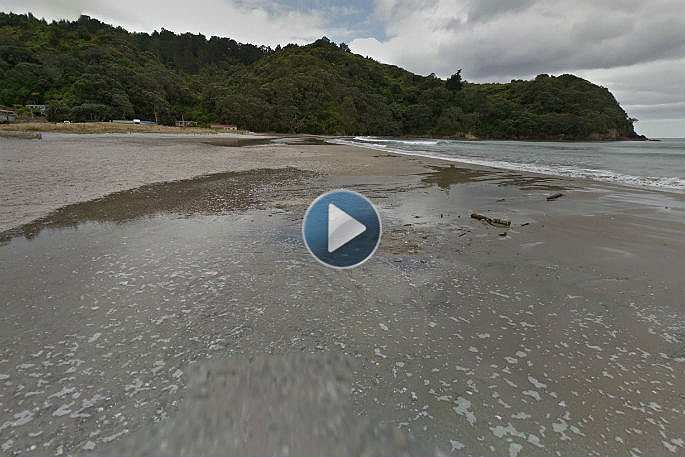The stench of dead pipi and tuatua is fading from the north end of Waihi beach as the high tides remove the large quantities of the shellfish found there after last weekend's rain.
Resident Jeanette McCallum video of the dead shellfish went viral on Facebook.
She says shellfish numbers are down to about a tenth of what they were when she filmed the drifts of dead shellfish on Tuesday.
'That first day they were really high,” says Jeanette. 'My husband went for a walk down the beach that evening and he said the stench was terrible.
'The next day I went for a walk and a lot of them had gone. The tide's a great cleanser. It's still a bit stinky but not too bad. The other night Dennis did notice some guys were digging and picking up pipis and they said they would test them.
'I think what happened was the fresh water suffocated them. I'm not sure if the council flushed out the reservoir before the heavy rain, and I did notice it looked muddy in the surf. The problem is if they don't flush it out there might be flooding, and if they do flush it out it kills the pipis.”
Western Bay of Plenty District Council confirms the Waihi Beach dam was flushed on Thursday morning, March 9.
It's a standard practice as agreed with the Waihi Beach community. Before an anticipated storm event staff carry out a number of acts:
They make sure all waterways are clear of any blockages, ensure the dam has storage capacity, and If required, let the water out of the gates.
Dr Michael Taylor, Team Manager Aquatic and Environmental Health at the Ministry of Primary Industries says the Ministry is discussing the shellfish deaths with the regional council.
'The Council has collected samples and couriered them to MPI for disease testing, as this is standard practice in mortality events such as this,” says Michael.
'It's important to rule out any disease cause.”
The samples are expected to arrive in Wellington today and MPI will test them on Friday, and likely more testing on further samples next week.
'At this stage it is considered that flooding with freshwater is the most likely cause of the event. This is not uncommon with flood conditions,” says Michael.
MPI is aware there are large populations of tuatua in the area and there is also a stream that discharges to the ocean in the vicinity.
MPI recommends people do not eat the dead shellfish.
The Regional Council and University of Waikato whose staff collected the samples, will be doing their own analysis.
The Regional Council fund a Chair in Coastal Science role to provide additional science support for issues like this.
The current Chair in Coastal Science, Professor Chris Battershill, says that it's likely a number of factors contributed to this shellfish die-off.
'Apart from the weather bomb that hit the area last week, higher ocean temperatures are being recorded in this area and there have been some large sea swells. It is also possible that this is a natural die-off due to stress from overcrowding as there is a very large population of shellfish densely packed just off the beach in this area,” says Chris.
'Although most of the shellfish appeared to be dead we did observe many live shellfish within the wave zone.”
The results are expected in three to four weeks.



0 comments
Leave a Comment
You must be logged in to make a comment.